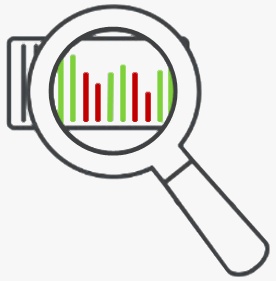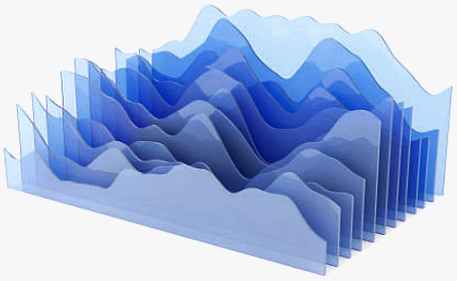Accredited InvestorsAltcoinAnatoli UnitskyAnti-Money Laundering (AML) In CryptoAPIArbitrageArtCoin TokenArticle DirectoryASICAuction Terminology GlossaryBasics of Stock Market InvestingBear MarketBest Crypto Payment Provider In the WorldBitcoinBlockchainBlockchain ConfirmationBlockchain Consensus MechanismBlockchain ForkBlockchain GlossaryBored Ape Yacht ClubBuild a Business That OutperformsBull MarketBuying SkyWay SharesByzantine Fault Tolerance (BFT) ExplainedCasascius CoinCentral Bank Digital Currency (CBDC)Centralized Crypto ExchangeCoinCoinsetCold WalletCollateralCommodity Futures Trading Commission (CFTC)Cross-Chain TechnologyCRUCrypto ExchangeCrypto GlossaryCrypto JokesCrypto Terms to KnowCrypto TickerCryptocurrencyCryptographyCryptojackingCryptounit BlockchainCryptounit GlossaryCryptounit ProgramdApp (Decentralized Application)Dead CoinDecentralized Exchange (DEX)Decentralized Finance (DeFi)Difference Between Bitcoin and EthereumDifferent Ways of Investing MoneyDigital CurrencyDistributed LedgerDo Your Own Research (DYOR)Dollar Cost Averaging (DCA)Dow Jones Industrial Average (DJIA)EncryptionERC-20ERC-721EthereumEvoScentFear Of Missing Out (FOMO)Fear, Uncertainty and Doubt (FUD)Fiat MoneyFNT Fintech CompanyGenesis BlockGlobal Unit PayGlossary of Banking TermsGlossary of Business TermsGlossary of Financial TermsHalvingHODLHot WalletHow Do I Start InvestingHow Rich is Satoshi Nakamoto?How to Create a BlockchainHow to Find Private InvestorsHow to Get Into FintechHow to Program Smart ContractsI Am Thrilled to Be a Part of This Global ProjectInitial Coin Offering (ICO)Initial Public Offering (IPO)Initial Token Offering (ITO)Innovation Basalt TechnologyInnovative Transportation TechnologiesInternational Bank Account Number (IBAN)Investing in Gold Mining StocksInvesting in Gold MiningJagerJoy of Missing Out (JOMO)Know Your Customer (KYC)LedgerLiquidity in CryptocurrencyMaker and Taker Fees in Crypto TradingMarket Capitalization (Market Cap)Meme CoinMetal Credit CardMetaMaskMillenials Now Have Access to Generational WealthMy Best Investment EverNew Digital EvolutionNFT GlossaryOff-Chain TransactionsOn-Chain TransactionsOpen Edition NFTPeer-to-Peer (P2P)Personal Loan GlossaryProbably the Best STO on the MarketProof of Stake (PoS)Real Estate Glossary of TermsReal Estate Investing GlossaryRebase TokenSecurities and Exchange Commission (SEC)Security Token ExchangesSecurity Token Offering (STO)Soulbound Decentralized Identities for Security TokensSoulbound ID Launch by Stobox Proves a SuccessSoulbound TokensStoboxStock Market GlossaryTestimonialsTether Platform and Token (USDT)UnitEx ExchangeUnitsky String TechnologiesUNTBUSDUValidatorWe Started Investing When We Were 25What are Blue Chip NFT?What are Blue Chip Stocks?What are Crypto Assets?What are Crypto Smart Contracts?What are CryptoPunks NFT?What are Digital Assets?What are Digital Collectibles?What are Gas Fees?What are Gas Wars?What are Hashmasks?What are Non Fungible Tokens?What are Non-Sufficient Funds (NSF)?What are Soulbound Tokens (SBT)?What are Stablecoins in Crypto?What are Transactions Per Second (TPS)?What are Utility NFTs?What are Utility Tokens?What Does Burning Crypto Mean?What Does Diamond Hands Mean?What Does Paper Hands Mean?What Does To The Moon Mean?What Does WAGMI Mean?What Happened to Satoshi Nakamoto?What is a 51% Attack?What is a Baby Boomer?What is a Backlink?What is a Banner?What is a Barcode?What is a Bid-Ask Spread in Crypto?What is a Block in Blockchain?What is a Block Reward?What is a Blockchain Address?What is a Blockchain Node?What is a Blockchain Oracle?What is a Blog?What is a Bond?What is a Bot?What is a Broker?What is a Business Accelerator?What is a Cash Cow?What is a Commercial Bank?What is a Commodity?What is a Con?What is a Credit?What is a Credit Limit?What is a Credit Rating?What is a Crypto Airdrop?What is a Crypto Bridge?What is a Crypto Scam?What is a Crypto Token?What is a Crypto Wallet?What is a Crypto Whale?What is a Crypto Winter?What is a Cryptocurrency Public Ledger?What is a Cryptocurrency Roadmap?What is a DAO?What is a Dark Pool?What is a Day Trader?What is a Dead Cat Bounce?What is a Default?What is a Derivative?What is a Digital Credit Card?What is a Fiscal Quarter?What is a Fungible Token?What is a Governance Token?What is a Grace Period?What is a Hard Fork?What is a Hot Wallet?What is a Hybrid Blockchain?What is a Hybrid PoW/PoS?What is a Joint Account?What is a Market Cap?What is a Merkle Tree in Blockchain?What is a Mining Farm?What is a Nonce? What is a PFP NFT?What is a POS System?What is a Prepaid Card?What is a Private Blockchain?What is a Private Key?What is a Public Blockchain?What is a Public Key?What is a Reserve Currency?What is a Ring Signature?What is a Routing Number?What is a Rug Pull in Crypto?What is a Safe Deposit Box?What is a Satoshi?What is a Security Token?What is a Seed Phrase?What is a Shitcoin?What is a Sidechain?What is a Soft Fork?What is a Spot Market?What is a State Bank?What is a SWIFT Code?What is a Tax Identification Number (TIN)?What is a Time Deposit?What is a Transaction Account?What is a Variable Interest Rate?What is a Virtual Assistant (VA)?What is a Virtual Card?What is a Virtual Currency?What is a Visa Card?What is a Whitelist in Crypto?What is a Whitepaper?What is Accounts Payable (AP)?What is AMA in Crypto?What is Amortization?What is an Accrual?What is an ACH Transfer?What is an Actuary?What is an Addendum?What is an Algorithm?What is an Angel Investor?What is an Annuity?What is an Asset?What is an ATM?What is an Atomic Swap?What is an Audit?What is an Avatar?What is an EIN?What is an Embargo?What is an Entrepreneur?What is an IDO (Initial Dex Offering)?What is an Interest Rate?What is an Internet cookie?What is an Investment Bank?What is an NFT Drop?What is an NFT Floor Price?What is an Ommer Block?What is an Orphan Block?What is an Outstanding Check?What is an Overdraft?What is Artificial Intelligence (AI)?What is B2B (Business-to-Business)?What is B2G (Business-to-Government)?What is Bartering?What is Bitcoin Dominance?What is Bitcoin Pizza Day?What is Blockchain Immutability?What is Blockchain Used For?What is BRICS?What is Business-to-Consumer (B2C)?What is C2C (Customer to Customer)?What is Capitalism?What is Catfishing?What is CFD Trading?What is Check Kiting?What is Cloud Mining?What is Communism?What is Content Marketing?What is Decentralization in Blockchain?What is DeFi in Crypto?What is Delisting?What is Depreciation?What is Digital Marketing?What is Diversification?What is Double Spending?What is Dumb Money?What is Dumping?What is Earnings Per Share (EPS)?What is Economics?What is Email Marketing?What is Equity?What is Etherscan?What is Fintech?What is Foreign currency?What is Forex?What is Fundamental Analysis (FA)?What is GameFi?What is Generative Art NFT?What is Gwei?What is Hard Currency?What is Hash Rate?What is Hashing in Blockchain?What is Inflation?What is Initial Game Offering (IGO)?What is Interest?What is Interest Income?What is Mainnet?What is Mastercard?What is Metaverse in Crypto?What is Mining in Cryptocurrency?What is Minting NFT?What is Mobile Banking?What is Money Laundering?What is NFT Alpha?What is NFT Metadata?What is NFT Rarity?What is NGMI Meaning?What is Nominal Interest Rate?What is Online Banking?What is Open-End Credit?What is OpenSea NFT Marketplace?What is Personal Identification Number (PIN)?What is Play-to-Earn?What is Polygon?What is Proof of Authority (PoA)?What is Proof of Work (PoW)?What is Public Key Cryptography?What is Pump and Dump?What is Quantum Computing?What is Refinancing?What is Retail Banking?What is Ripple?What is Sharding?What is Slippage in Crypto?What is Smart Money?What is Solvency?What is Soulbound ID?What is SSL?What is Staking in Cryptocurrency?What is Technical Analysis (TA)?What is Testnet?What is the Ask Price?What is the Better Business Bureau (BBB)?What is the Bid Price?What is the Dark Web?What is the InterPlanetary File System (IPFS)?What is the Gold Standard?What is the Lightning Network?What is the Prime Rate?What is the Sandbox?What is the Secondary Market?What is the World Bank?What is Tier 1 Capital?What is Tokenomics?What is TRC-20?What is Universal Banking?What is Unspent Transaction Output (UTXO)?What is Usury?What is Volatility in Crypto?What is Wash Trading?What is Web3?What is Whisper?What is XRP?What is Zero-Knowledge Proof (ZKP)?Who is Beeple?Who is Satoshi Nakamoto?Who is Vitalik Buterin?Why Tokenization is a Safe HavenWhy You Should Try Your Hand at Trading
What is Technical Analysis (TA)?
- Home
- Crypto Glossary
- What is Technical Analysis (TA)?
Technical analysis, often abbreviated as TA, involves a subjective analysis that combines statistical data with patterns that can be identified by the unaided eye.

However, to the untrained eye, technical analysis may seem less valuable or even mystical. To fully appreciate its value, it is crucial to acquire a fundamental understanding of technical analysis and its foundational concepts.
What is Technical Analysis (TA)?
Technical analysis, also known as charting, is a methodology used to forecast future market behavior by analyzing past price action and volume data. It is a popular approach used to study traditional financial assets such as stocks, as well as cryptocurrencies.
Unlike fundamental analysis, which considers various factors that impact an asset's price, technical analysis solely focuses on the asset's historical price action. It is commonly used by traders to identify trends and profitable trading opportunities.
The origins of technical analysis can be traced back to the 17th and 18th centuries, but it was Charles Dow who is credited with the modern form of technical analysis. His observations of market trends led to the development of the Dow Theory, which helped shape the future of technical analysis.
Today, technical analysis is widely used by traders and investors, and its core assumption is that the price of an asset is not random and evolves into identifiable trends over time. By studying the market forces of supply and demand, which are influenced by the emotions of traders and investors, technical analysts can identify potential opportunities.
However, technical analysis is more reliable in high-volume and liquid markets that are less susceptible to price manipulation and external influences. To analyze prices and identify trends, traders use a variety of charting tools known as indicators, which can help identify current and potential trends.
Since technical analysis indicators are not infallible, some traders use multiple indicators to reduce risks.
Common Technical Analysis Indicators
While there are numerous indicators available, we`will focus on some of the most common TA indicators used by traders.
- Moving Averages (MA) - Moving averages are a popular and simple TA indicator used to smooth out price action and identify potential trends. It is calculated by averaging the price of an asset over a specified period. The two most common types of moving averages are the Simple Moving Average (SMA) and the Exponential Moving Average (EMA). The SMA gives equal weight to each price point, while the EMA gives more weight to recent price action.
- Relative Strength Index (RSI) - The Relative Strength Index is a momentum oscillator that measures the speed and change of price movements. It is calculated by comparing the average gains and losses over a specified period. The RSI ranges from 0 to 100, with overbought levels typically considered above 70 and oversold levels below 30.
- Moving Average Convergence Divergence (MACD) - The Moving Average Convergence Divergence is a momentum indicator that helps identify potential trend changes. It is calculated by subtracting a long-term moving average from a short-term moving average. The MACD is commonly used to identify bullish and bearish crossovers.
- Bollinger Bands - Bollinger Bands are a volatility indicator that helps identify potential price breakouts. They are created by plotting two standard deviations above and below a moving average. The bands widen during periods of high volatility and narrow during periods of low volatility.
- Fibonacci Retracement - Fibonacci retracement is a TA tool used to identify potential price levels based on the Fibonacci sequence. It is used to identify potential support and resistance levels. Fibonacci retracement levels are calculated by drawing lines between high and low points and dividing the vertical distance by the key Fibonacci ratios.
- Stochastic Oscillator - The Stochastic Oscillator is a momentum indicator that compares the current closing price to the price range over a specified period. The indicator ranges from 0 to 100, with levels above 80 considered overbought and levels below 20 considered oversold.
- Ichimoku Cloud - The Ichimoku Cloud is a comprehensive TA tool that includes multiple indicators to provide a more complete view of potential trends. It includes a cloud, which represents potential support and resistance levels, and a moving average crossover component.
The Controversy Surrounding Technical Analysis in Financial Markets
Technical analysis is widely used in financial markets, but it is also a topic of controversy and skepticism among many specialists. It is often referred to as a "self-fulfilling prophecy" since events can happen solely because a large number of people assumed they would happen.
Critics of TA argue that if a significant number of traders and investors rely on the same indicators, such as support or resistance lines, the chances of these indicators working increase. However, supporters of TA contend that each chartist has a unique way of analyzing charts and using indicators, making it unlikely for a large number of traders to use the same strategy.
Despite the debate, many traders and investors continue to use TA in their decision-making processes. While it may not be a perfect method, it remains a valuable tool for those who choose to incorporate it into their trading strategies.
Related Articles

Do Your Own Research (DYOR)
One way to enhance your DYOR process in crypto is by incorporating technical analysis (TA). By examining the historical price movements of cryptocurrencies, you can...

What is Fundamental Analysis (FA)?
Traders also use technical analysis tools to identify trends and patterns that may impact a cryptocurrency's value.

Different Ways of Investing Money
You will need to research the different exchanges available, choose one that suits your needs, and learn the basics of trading technical analysis.
- Home
- Crypto Glossary
- What is Technical Analysis (TA)?